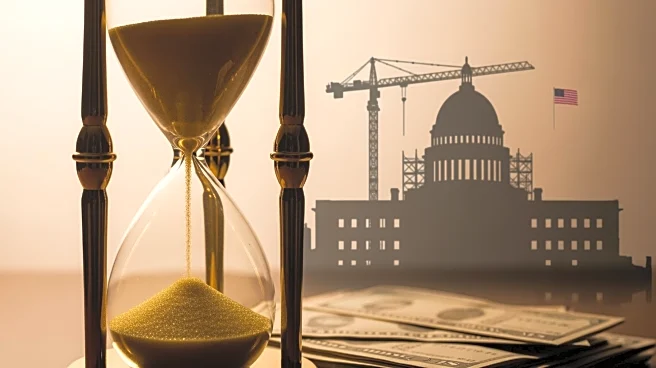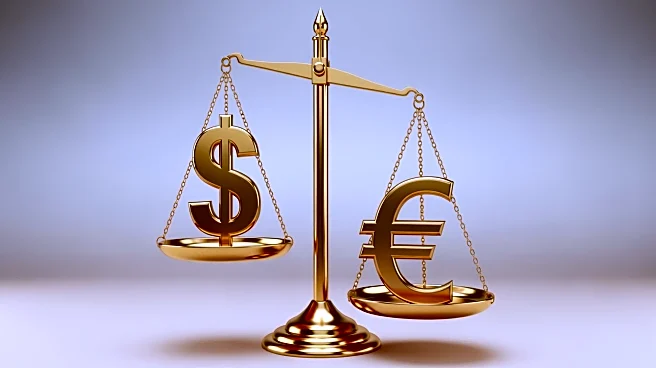What's Happening?
Gold prices have seen a slight increase as the U.S. dollar weakened from a recent four-month high. This development comes amid ongoing uncertainty surrounding the U.S. economic outlook due to the longest-ever
government shutdown. Spot gold rose by 0.1% to $3,985.59 per ounce, while U.S. gold futures for December delivery also increased by 0.1% to $3,995.30 per ounce. The dollar's decline by 0.2% has made gold more affordable for holders of other currencies. Additionally, U.S. private employers added 42,000 jobs in October, surpassing expectations and potentially affecting interest rate cut prospects. The Federal Reserve recently cut interest rates, but Chair Jerome Powell indicated it might be the last reduction for the year. Market participants now see a 63% chance of another rate cut in December, down from over 90% last week.
Why It's Important?
The rise in gold prices amid a softer dollar and government shutdown highlights the ongoing economic uncertainty in the U.S. The prolonged shutdown has forced investors and the Federal Reserve to rely on private sector data, complicating economic forecasts. The stronger labor market, as indicated by the job additions, could influence the Federal Reserve's future interest rate decisions, impacting borrowing costs and investment strategies. Gold, a non-yielding asset, typically performs well in low-interest-rate environments, making it an attractive option for investors seeking stability amid economic volatility. The situation also underscores the broader implications of political gridlock on economic policy and market confidence.
What's Next?
As the government shutdown continues, investors and policymakers will closely monitor private sector indicators to gauge the economic impact. The Federal Reserve's future interest rate decisions will be pivotal, with market participants adjusting their expectations based on economic data and political developments. The ongoing legal challenges to President Trump's tariffs could also have significant implications for global trade and economic relations. Stakeholders, including businesses and financial markets, will need to navigate these uncertainties as they plan for the remainder of the year.
Beyond the Headlines
The government shutdown and its economic repercussions highlight the potential for political stalemates to disrupt economic stability. The reliance on private sector data during the shutdown raises questions about the robustness and reliability of economic indicators in the absence of official government reports. Additionally, the legal scrutiny of President Trump's tariffs could set precedents for future trade policies, affecting international economic dynamics and U.S. trade relations.











